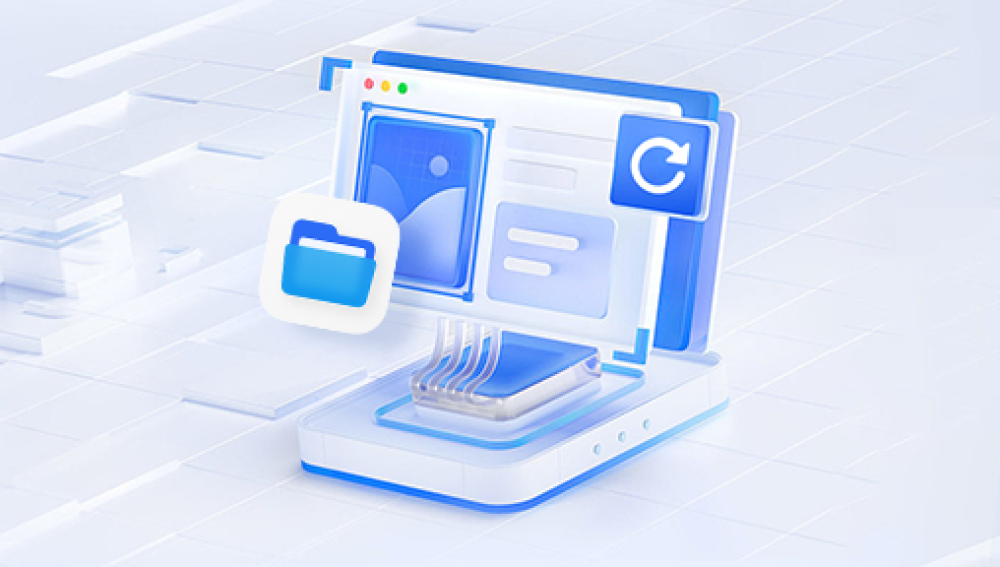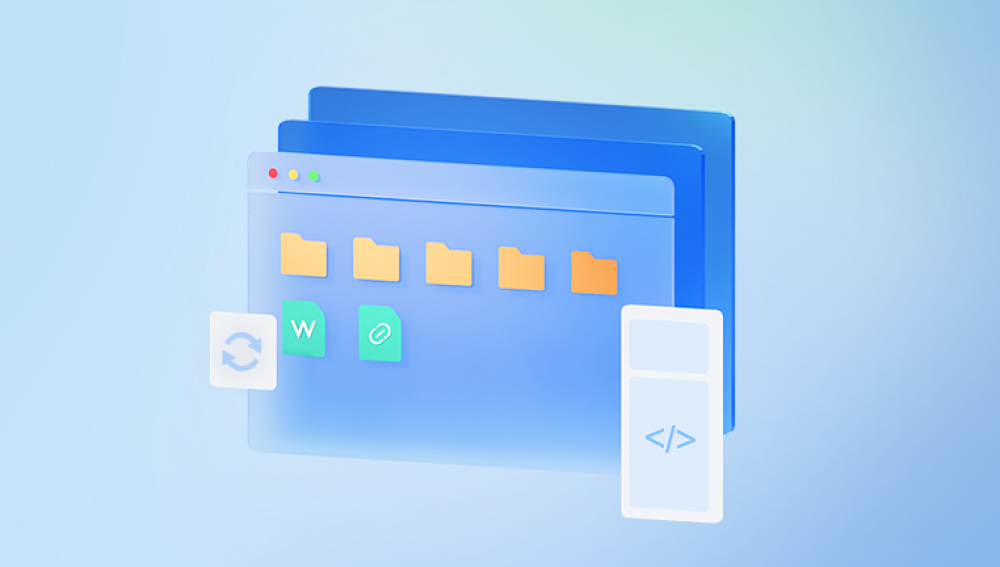Maybe you emptied the Recycle Bin too quickly, formatted the wrong drive, or your system crashed and took your files with it. No matter how it happened, losing data can be a terrifying experience.
The good news? Deleted files are often recoverable. Thanks to modern operating systems and powerful recovery tools, it’s possible to retrieve deleted files even those that appear permanently gone.
1. Deletion Isn’t Instant Destruction
When you delete a file on your computer (e.g., using "Delete" or moving it to the Recycle Bin), the file isn’t actually erased. Instead, the operating system marks the space occupied by that file as available for reuse. The data remains on the disk until new data overwrites it.

2. Temporary vs. Permanent Deletion
Recycle Bin/Trash: Files moved here are easy to recover. Simply restore them with a click.
Shift+Delete or emptied Recycle Bin: These files skip the temporary folder and appear permanently gone—but they’re still recoverable with software.
Formatted drive: Formatting a disk wipes its file structure but not necessarily its data. It’s more difficult, but not impossible, to recover.
Deleted partitions: This involves more complex data recovery but can still be reversed using the right tools.
Factors That Affect File Recovery
Several factors influence whether your deleted files can be recovered:
How recently the file was deleted: The less time that has passed, the higher the chance of recovery.
Device usage after deletion: Installing apps, saving files, or browsing the internet can overwrite deleted data.
Type of storage device: Recovery from HDDs is easier than SSDs because SSDs use TRIM to erase deleted blocks immediately.
File system used: File systems like NTFS (Windows), HFS+ or APFS (Mac), or ext4 (Linux) handle deletion and storage differently.
The recovery method or tool used: Some tools are better suited for specific types of recovery than others.
Step-by-Step: How to Retrieve Deleted Files
Let’s explore the various methods you can use to retrieve deleted files, from basic to advanced.
Method 1: Check the Recycle Bin (Windows) or Trash (macOS)
This is the simplest and quickest method.
For Windows:
Open the Recycle Bin from your desktop.
Locate the deleted file(s).
Right-click and select Restore.
The file will return to its original location.
For Mac:
Click on the Trash icon in the dock.
Find the deleted file.
Right-click and choose Put Back.
This method only works if the file was deleted normally (i.e., not with Shift+Delete or Command+Delete).
Method 2: Use File History or Backup (Windows/macOS)
Both Windows and macOS have built-in backup tools that allow you to restore previous versions of files.
For Windows (File History or Backup and Restore):
Search for “Restore your files with File History” in the Start menu.
Browse through the list of available versions.
Select the file or folder you want to restore.
Click Restore.
If File History is disabled, you can try Backup and Restore (Windows 7):
Go to Control Panel > System and Security > Backup and Restore.
Choose Restore my files.
Follow the prompts to recover your data.
For Mac (Time Machine):
Connect your Time Machine drive if it's external.
Open the folder where the file was stored.
Launch Time Machine from the menu bar.
Use the timeline to locate a previous version.
Select the file and click Restore.
Method 3: Restore from Cloud Services (Google Drive, OneDrive, Dropbox)
If you use cloud storage, there’s a good chance your file is recoverable from there.
OneDrive:
Go to the OneDrive website or folder.
Navigate to the Recycle Bin.
Select the file and click Restore.
Google Drive:
Open Google Drive.
Go to the Trash.
Right-click on the deleted file and choose Restore.
Dropbox:
Log into Dropbox.com.
Click Deleted Files on the left menu.
Select your file and choose Restore.
Method 4: Use Data Recovery Software
If the above methods fail, it’s time to turn to dedicated recovery tools.
What Can Recovery Software Do?
These tools scan your storage devices for remnants of deleted files and reconstruct them if possible. They can recover files from:
Emptied Recycle Bin or Trash
Formatted drives
Deleted partitions
Crashed systems
Corrupted USB drives or SD cards
Top Recovery Software Options
1. Drecov Data Recovery
Easy-to-use interface for beginners
Deep scan for formatted or corrupted drives
Preview feature before recovery
Works on Windows and macOS
Read-only scanning to prevent data overwrite
2. Recuva (Windows)
Free and lightweight
Good for accidental deletions
Offers deep scan and secure file deletion
Limited recovery on formatted drives
3. EaseUS Data Recovery Wizard
Recovers over 1000 file types
Deep and quick scan modes
Supports HDD, SSD, USB, SD cards
Free version recovers up to 2GB
4. Disk Drill
Modern interface
Available for Windows and Mac
Recovery Vault to protect files before loss
Additional tools for drive monitoring
5. Stellar Data Recovery
Professional-grade tool
Recovers from formatted, encrypted, or corrupted drives
Supports optical media recovery
More advanced, better for professionals
6. PhotoRec
Open-source and free
Command-line interface (no GUI)
Deep signature-based scanning
Works on nearly every OS
How to Use Recovery Software (Example: Drecov Data Recovery)
Download and install Drecov Data Recovery on a different drive than the one you're recovering from.
Launch the software and choose the location of the deleted file (e.g., Desktop, Documents, external drive).
Select Quick Scan or Deep Scan.
Wait for the scan to complete. This could take minutes to hours depending on drive size.
Preview the recoverable files, then select the ones you need.
Click Recover and save them to a new drive.
Tip: Never save recovered files to the same location they were deleted from. It risks overwriting other lost data.
Special Cases and Recovery Tips
1. Recovering Deleted Emails
Most email services keep deleted emails in the Trash for 30 days. If using a local client like Outlook or Thunderbird, check the Deleted Items folder. For permanently deleted emails, some data recovery tools can scan PST or MBOX files.
2. Recovering Files from USB or SD Cards
The process is similar to recovering files from a hard drive. Ensure the device is connected, then use a recovery tool to scan the USB drive or memory card. Avoid using the device until recovery is complete.
3. Recovering Files from a Crashed System
If your computer won’t boot:
Use a bootable recovery disk (created using software like EaseUS or Stellar).
Boot the system using a USB drive.
Run the recovery tool from the bootable environment.
Save recovered files to an external drive.
4. Recovering Files After Reinstalling Windows
If Windows was reinstalled without formatting, recovery is still possible using deep scan tools. If the drive was formatted, your chances depend on whether new data has overwritten the previous data.
How to Increase File Recovery Success
Act Quickly: The sooner you try to recover files, the higher your chances.
Stop Writing Data: Don’t install programs or save files on the affected drive.
Use Reliable Tools: Poor-quality recovery tools may worsen the situation.
Clone Before Recovery: If the drive is failing, create a disk image and run recovery on the copy.
Use Multiple Tools: If one software doesn’t work, try another.
How to Prevent Future Data Loss
Recovery is stressful prevention is easier.
Enable File History or Time Machine: These tools automatically back up files.
Use Cloud Storage: Services like OneDrive and Google Drive sync files and keep history.
Make Regular Backups: Use external hard drives or backup software.
Create Disk Images: For system backups, disk imaging tools create full drive snapshots.
Avoid risky behavior: Be cautious when deleting, formatting, or modifying system files.
Losing files on your computer can feel like the end of the world but it doesn’t have to be. With the right knowledge and tools, deleted files can often be recovered completely. Whether you’re restoring from the Recycle Bin, retrieving old backups, or using professional recovery software, there are multiple ways to get your data back.




